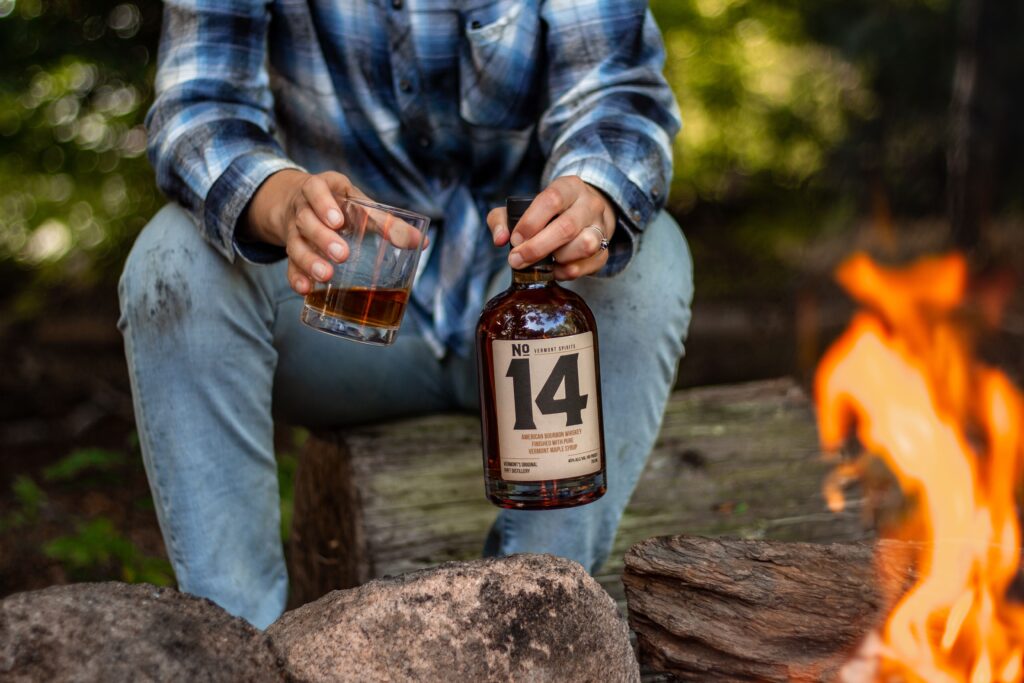I must confess that I have never had the occasion or taken the time to visit Vermont. I suppose it ought to be on my bucket list by now. The issue has nothing to do with the fine people who live there or the geography of the state. No; my issue is more of a climate PTSD thing. And I’m no better off for having avoided the six states commonly referred to as the New England region.
Being born and raised in Minnesota, I quickly grew to despise the brutality of the cold weather with its snow, ice, and low temperatures fit for neither man nor beast…nor automobile. These were sixteen nightmare years of excessively frigid winters which I am glad to have put behind me permanently. My whole family grew up suffering through that cold. I still have family there and while I used to wonder how they made it through the winters, now I only wonder why they do it. There are plenty of other places to live where that seasonal abuse does not happen. But to all of them it’s “normal.” My Dad has a picture that is burned into my memory of him, his brother and his cousin as Boy Scouts trying to start a campfire after digging out three feet of snow to find the frozen ground during a winter camping excursion. Insanity, I say! My Dad was smart; he eventually moved south.

When my ninth grade geography teacher talked about Siberia, Russia and all its cold, I looked out the ice-encrusted classroom window at nothing but piles of snow and gray skies to wonder how Minnesota was any different than Siberia. On the quiz that week was the question: “Describe the main difference between Siberia and your home state.” My answer was: “They drink vodka in Siberia.” Since then, whenever I think of the “northern states” above say, Kentucky, I wince a bit because I know that they share that similar unruly cold weather which Minnesota often suffers. In my mind, that would include Vermont as well, with no reason to voluntarily travel there for a blast of Old Man Winter’s abuse.
In my heart, I know that is the wrong way to look at it…and shame on me for not seeing a therapist to overcome my unnatural, yet personally justifiable, trepidation with regards to Vermont and all of its surrounding environs. Now, decades later, I have both reason and purpose to one day plan the nine-hundred-mile trek to visit Vermont and its original craft distillery, Vermont Spirits.

The Distillery
I recently spoke with the CEO of Vermont Spirits, Randy Carlson, and I had the opportunity to sample the distillery’s fine family of spirits. It currently produces several products; Vermont Gold, an 80-proof vodka distilled entirely from the sap of maple trees. Under the Coppers brand name Vermont Spirits offers three excellent gin varieties, all distilled with wild Vermont juniper berries; a 90 proof Sugarwood Gin, an 85 proof American Style Gin, and a rather intriguing 85 proof Barrel Gin, which is a NAS double oak barrel finished product. The signature item takes its title from the founding of the State of Vermont; No. 14 Bourbon Whiskey which is a reference to Vermont becoming the fourteenth state of the union. This wonderful expression is a NAS 90 proof which is finished with pure Vermont maple syrup.
Randy was able to fill me in with all the details. Vermont Spirits was originally conceptualized by anthropologist Duncan Holaday. He moved to Indonesia in the 1980’s and was struck by how the local people subsisted almost entirely on locally grown products. Eventually returning to the United States, Duncan imagined a distillery in Vermont that would be different than the very large commercial distilleries. Duncan remembered his experience in Indonesia and decided that his distillery would use local products like maple and other things to produce his own spirits.
At this time, the internet was not a thing; information and resources had to be found in person. Making a high quality spirit from scratch requires a certain degree of knowledge and skills. To accomplish this, Duncan enlisted a few folks from Cornell University help get the formula right, with yeast and the rest. He also discovered that there was no place to just order a proper-sized still for his small batch operation. Soon, he invented a glass column still and started making vodka from maple which is still made today. Vermont Spirits started making Vermont Gold vodka in 1999.

From 1999 to 2010, only the vodka was being sold in Vermont stores. In 2010, the State of Vermont changed and updated its laws to allow on-premise and online sales of liquor, relaxed other prohibitions and regulations that paved the way for small batch producers to begin to thrive. In 2007, investors came into the picture and in 2011 the distillery was moved 70 miles south of its original location to Quechee. It was still a local business selling product direct to consumers out of the distillery until 2020.
Today, though Vermont Spirits is shipping its product to 41 states through retail outlets and online sales, it is still considered a small batch producer. For the first time, Vermont Spirits will push past 5,000 9-liter cases annually this year. There are plans in the works that will soon push Vermont Spirits well above that mark.

The Man
Randy Carlson tells me that for his career path he doesn’t like to ride the tide, but prefers to ride the tops of the waves, “where the excitement is.” He got his start in the spirits business at Diageo in 2004. There he worked on line extensions, vertical brand extensions, and new brand introductions. His focus there was between product innovation and established brands. He watched competitive markets closely to see what strategic investment could be successful in the environment of Diageo. “Making small things into big things” he said. Randy left Diageo in 2014.
After a period of discussion and consultation with Vermont Spirits investors, they eventually asked him to lead the company in 2020. It was a great choice as Randy is the perfect guy for the job. When I was listening to Randy, I got a clear sense that he shares a lot of similarity in mindset to Duncan Holaday; he is also a craftsman at heart. His focus is one brand at a time, and the focus of resources on the No. 14 Bourbon is evident. Vermont Spirits did not set out to make “just another bourbon.” He said, “With No. 14, we access a whole different taste and mindset.” The product reflects this effort and connecting with consumers is being accomplished with focus on consumer education and tastings. Indeed, one sip of No. 14 and it is obvious that this bourbon is not to be considered average.

The Product
Randy focuses on consistency with No. 14. Long ago, this was somewhat lacking and barrels were being sourced mainly on price. But today that is not the case. Three years is the youngest product Vermont Spirits uses, sourcing from several distilleries in Tennessee, Indiana, Virginia and Missouri. The oldest the company blends and bottles is just under five years. Randy notes that that three-to-five year window is really the sweet spot for the No. 14 due to the ideal flavor profile. Final aging is done in Vermont, and due to the unique environment, it mellows the spirit a bit differently, much like a scotch. He says the mash bill of No. 14 is a minimum of 70% corn, a maximum of 10% barley, and the remaining is rye.
What does it taste like?
I sampled the No. 14 bourbon for this article. In my Glencairn glass its attractive appearance is a bright tawny, almost an auburn color. On the nose it opens with a gentle sweetness. There is only a faint hint of maple syrup present with a rounded oaky start. I added three drops of water which immediately opened up some floral notes with a bit of pleasant spiciness lurking in the background. On the palate it seems to want to coat the mouth completely. Initially No. 14 has a strong oaky or old wood wholesomeness to it, which I liked. The maple is present and delicately shows up after a little while, but it arrives gracefully in the background to blend in. It pleasantly fades out to hints of vanilla bean and traces of coconut followed by some unexpected maltiness. Additionally, the finish is quite long and ultimately ends with a note of sweet candy, perhaps it is red licorice. Then I waited for the unpleasant “bourbon bite,” because almost every one I have tried ultimately ends with a bite. Here, No. 14 made me wait…and wait…and wait. It was anticlimactic, as there just was no bite. The finish the smoothest I have tried, it finished like silk. Randy attributes this smoothness to the maple.
I’m sure that there are a lot of great things to do in Vermont. Visiting Vermont Spirits would be reason enough for me to make the trek to Vermont one day…but that will certainly happen during the spring, summer, or fall months. I still can’t take the cold weather, but I can no longer justify blaming Vermont for Minnesota’s nasty climate. Personal Minnesotan traumas aside, I am rather impressed with what Vermont Spirits offers; the high quality expressions are compelling, unique, and worthy for anyone to try them out. As Vermont Spirits likes to say, enjoy Vermont in a Bottle!




